Category: Latter-day Saint Thought
-
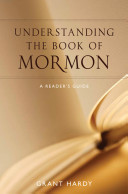
Grant Hardy and Personal Scripture Study
Every semester, one of my principal goals in my tax classes is to get my students to engage with the Internal Revenue Code. And it’s harder than you might think: often they don’t read the Code itself, focusing instead on the explanations in their casebook.[fn1] And their aversion to reading the Code is completely understandable:…
-
An Unsettling Book: Grant Hardy’s Understanding the Book of Mormon
This is the fourth in a series of reviews of Grant Hardy’s Understanding the Book of Mormon: A Reader’s Guide (OUP, 2010) that we are posting this week at Times and Seasons. It says something about the book that there is still a lot to talk about.
-
Grant Hardy’s Subject Problem
Criticisms of the Book of Mormon generally fall into one of two categories: objections to its historical claims on the one hand, and on the other critiques of its literary style. The two prongs are often combined in a single attack, for instance in the suggestion that the awkward style of the book reflects the…
-
Call for Papers: 3rd Brazilian Mormon Studies Conference
3rd Brazilian Mormon Studies Conference Annual Conference of the Associação Brasileira de Estudos Mórmons (Brazilian Mormon Studies Association –ABEM) January 28, 2012 São Paulo, Brazil Call for papers “Mormonism and its relationship with other denominations” The Mormon religious tradition is based on the concept of an apostasy by all Christian denominations and their consequent lack…
-
Who Wrote the Gospels?
It always helps to know who wrote what you are reading, and Bible books are no exception. The four gospels, in particular, present interesting questions of how the narratives were composed and who did the composing.
-
A Patriotic Chosen People?
Yesterday in the Sacrament Meeting I attended, we closed singing the Star Spangled Banner (I managed to suppress the urge to yell “Play Ball” at the end). While going through the typical sacrament meeting in the U.S. before the July 4th Independence Day holiday, I couldn’t help thinking about what role patriotism should play in…
-
Handbook 2: Chapter 1—the Plan
Last week I began a series of posts that will examine Handbook 2, the policy handbook that the Church put online last Fall. Since so many local leaders are urged to read and study the handbook as part of their callings, I hoped to provide an interesting forum to do that. Chapter 1 of the…
-
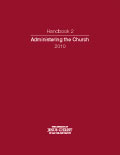
Handbook 2: Introduction
After the Church posted the text of the 2nd volume of its administrative handbook (formerly known as the Church Handbook of Instructions—CHI) last fall, a few bloggers looked at the handbook, including our own Dave Banack.
-
Doctrine and Practice
I enjoyed Alison’s post from a couple of weeks ago, Does Gender Matter?, but I’m a little confused how the pieces fit together. The post appears to accept the nonscriptural, uncanonized Proclamation at face value, stating: “Gender is part of who we are and who we have always been. It is important. It matters.” That…
-

Immigration Where?
When I was on vacation a few years ago I picked up a local paper and found a number of articles about the problems that area was facing because of illegal immigration. Predictably there was crime committed by the illegal immigrants, and a lot of hate towards them. For an American nothing there was unusual–except…
-

Taking Section 89 Seriously
Which revelations we cherish and consider central, and which one’s we sideline and (sometimes literally) forget is surely a result of a complex host of variables. Local culture and politics are obviously a huge deal. The Word of Wisdom is a revelation that is particularly interesting
-

Personal and Community Responsibility
Yesterday in priesthood we discussed President Monson’s October 2010 Conference address on the Three Rs of Choice. One of the three Rs is ‘Responsibility’ — which led, of course, to discussing personal responsibility. In the discussion it occurred to me that personal responsibility is very closely connected to community responsibility.
-
The Language of God
I recently breezed through a short book by Herman Wouk (author of the Pulitzer Prize-winning novel The Caine Mutiny) titled The Language God Talks: On Science and Religion (Little, Brown and Co., 2010). The book has the virtues of being short, entertaining, and informative as it recounts the author’s quest to relate his deep religious…
-

Can institutions repent?
A recent news story about the beatification of John Paul II mentioned that the late Pope had led the Catholic Church to “repent” for its anti-semitism. The use of the word “repent” stuck out in my mind, and made me wonder, “Can an institution, such as a Church, repent?”
-
Making Mormons in the 21st Century
Jan Shipps always has something interesting to say about Mormonism. An essay you might not have run across is “Making Saints: In the Early Days and the Latter Days,” in Contemporary Mormonism: Social Science Perspectives (Univ. of Illinois Press, 1994). It turns out that becoming a Latter-day Saint (or acquiring the characteristics of Mormon ethnicity)…
-
Debating Mormonism
A few weeks ago I judged several rounds of a debating tournament held at the local high school. Teams from all over the state participated. Imagine walking by a high school cafeteria and seeing a couple of hundred students dressed in suits and skirts, chattering like all kids do but also pouring over notes and…
-

Reading Scripture in the 21st Century
I recently read Thinking Through Our Faith: Theology for Twenty-first-Century Christians (Abingdon Press, 1998) by C. David Grant, a professor of religion at TCU. The book might be described as a short prologue to a 21st-century approach to theology, one that takes full account of science, historical criticism, and pluralism — in short, the sort…
-
Regime Change in the LDS Church
I recently finished America’s Three Regimes: A New Political History (OUP, 2007) by Morton Keller, a retired history prof at Brandeis. The author suggests there have been three enduring American political regimes: a deferential-republican regime that lasted from the Revolution until the emergence of true party politics (Whigs and Democrats) during the 1830s; a party-democratic…
-
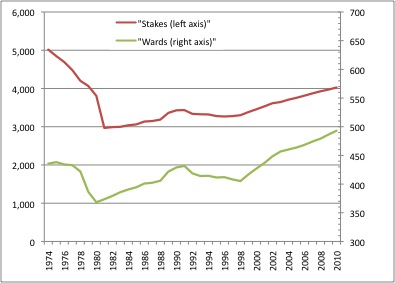
The Implied Statistical Report, 2010
A couple of years ago my post The Implied Statistical Report, 2008, looked at what can be learned from a detailed examination of the data the Church releases each April Conference. This conferences’ data includes an additional statistic not found in earlier reports, the number of Church Service Missionaries, which led me to look again…
-
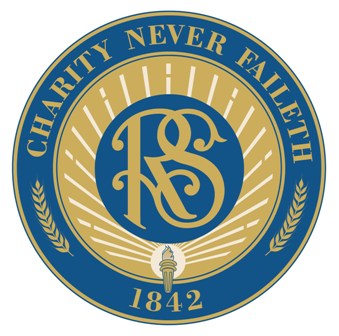
Sunday Morning Session
President Henry B. Eyring conducting. Discourses by President Dieter F. Uchtdorf, Elder Paul B. Johnson, Bishop H. David Burton, Sister Silvia H. Allred, Elder David A. Bednar and President Thomas S. Monson. Perhaps even more so than previous sessions, the theme of this session was the Church Welfare program. President Eyring mentioned the 75th anniversary…
-
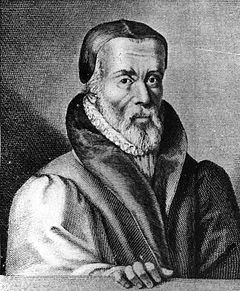
Saturday Afternoon Session
Pres. Uchtdorf conducted again, and following the customary audit report and statistical report, talks were given by Elder Boyd K. Packer, Elder Russell M. Nelson, Elder Russell J. Maynes, Elder Cecil O. Samuelsen, Elder Dallin H. Oaks and Elder M. Russell Ballard.
-
A tool for Conference analysis
While we know that gospel principles are eternal, we must also admit that the language used to describe them changes over time. And now we have a tool for discovering and analyzing how Church leaders have changed their descriptions of the gospel over the past 160 years.
-
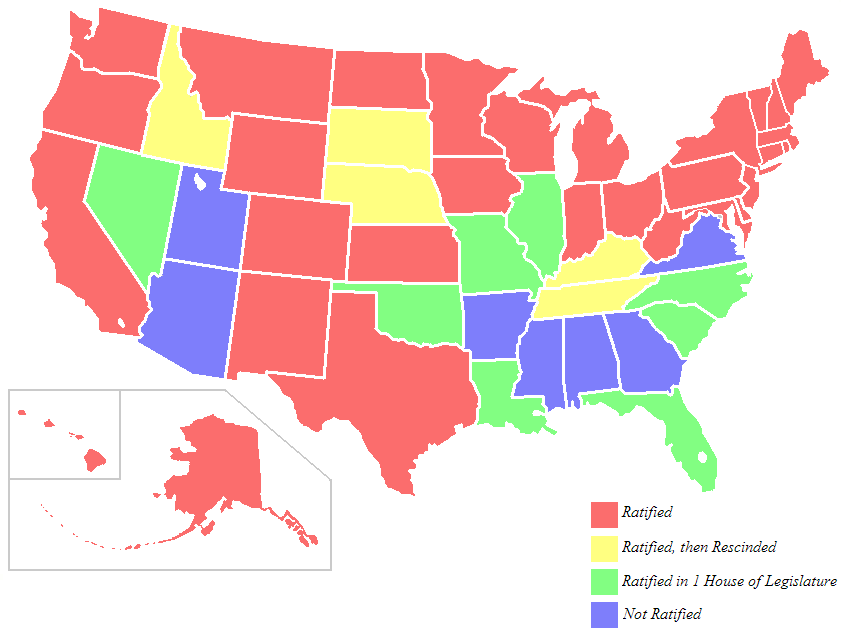
Balancing Political Positions with the Church and the Gospel
My earliest memory of conflict over Church decisions came because of a local stake division and boundary changes.I remember my mother venting about how one high councilor in one stake prevented the boundary change from following local political boundaries, which would have, in my mother’s view, give Church members a more unified voice in local…
-
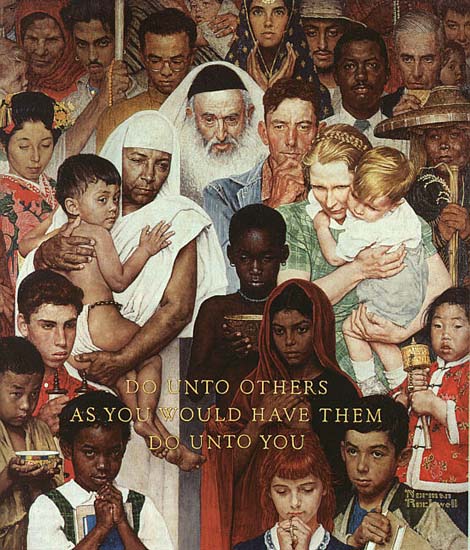
Applying the Golden Rule Collectively
Christian religions, in general, believe in what is widely known as the golden rule: Do unto others as you would have them do unto you. In fact, as I understand it, most belief systems have some version of this idea. It seems to me that it is usually understood individually. But I have to believe…
-

Tsunami
I am sure that many of you have been following the stunning events in Japan: earthquake, tsunami, meltdown. Our first personal reaction to such events is always concern and sympathy for those swept up in the ongoing human tragedy. The first LDS institutional response, when resources are available, is to forward relief supplies and helping…
-
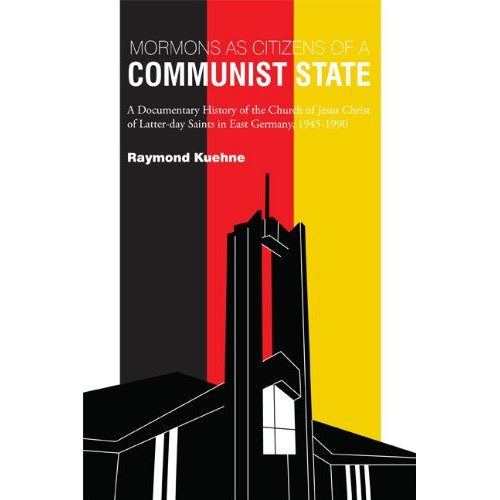
International Bibliography 2010
With the growth of the LDS Church worldwide, I think few academics of Mormonism disagree that the Church’s international progress deserve more attention. Even so, I was surprised when I compiled a list of international publications from last year. The list is substantial.
-

Peace
Sometimes unintentional mistakes lead to interesting lines of thought. A few weeks ago I misheard a speaker in an LDS meeting. The speaker was quoting John 14:27, and either because of the speaker’s mispronunciation or my imperfect hearing, I heard the word “live” instead of the word “leave.” This lead me to think about what…
-
Challenges of Church History
Just finished A Brief History of History: Great Historians and the Epic Quest to Explain the Past (The Lyons Press, 2008) by Colin Wells. It is a quick review of all those names you have heard a time or two (Thucydides, Tacitus, Guicciardini, Ranke, Burckhardt, Turner, Braudel, etc.) woven together into a narrative. Favorite quote:…
-
MR: Death Is Lighter than a Feather: A Review of C.S. Lewis’ The Great Divorce
A new issue of The Mormon Review is available, with Adam Greenwood’s review of The Great Divorce, by C.S. Lewis. The article is available at: Adam Greenwood, “Death Is Lighter than a Feather: A Review of C. S. Lewis’ The Great Divorce,” The Mormon Review, vol.3 no. 1 [HTML] [PDF] In this essay, Greenwood reads…
